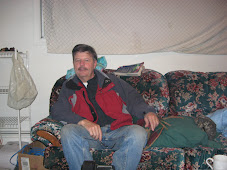> http://www.scarenb.ca/
> Presentations by
>
> Inka Milewski, Health Watch Director, Conservation Council of NB:
Results
> of the 1981 NB Department of Health study of radon in the Harvey area.
>
> Tracy Glynn, Forest Campaigner, Conservation Council of NB/Mines and
> Communities Co-Editor:
Uranium 101.
>
> Where:
Harvey, NB at the St. Andrews United Church Centre Education Centre
>
(entrance on right hand side of the building facing Fredericton), 2350
>
Route 3 on the main road from F'ton to St. Stephen. Approx. 2 min drive
>
beyond the village limits.
>
> When: 7:30 PM, Thursday, June 12.
>
> Harvey area MLA Carl Urquhart has confirmed his attendance.
>
> For more info, contact Kay at kayc@nb.sympatico.ca
>
 Support Citizens Against Radioactive Emissions
Support Citizens Against Radioactive Emissions
10 Things You Should Know About Uranium Mining
1.“Exploration crews searching for uranium will receive radiation exposure from uranium and its associated radioactive decay products in the drill core cuttings” (Radiation Protection Guidelines for Uranium Exploration. Saskatchewan Labour Department, Occupational Health and Safety Division: http://www,labour.gov.sk.ca/safety).
2. “Whether or not [uranium] mining is conducted in open pits or underground, there are environmental health hazards and impacts to workers and the general public that need to be considered. These include radiation hazards from radon gas, radium, thorium, and non-radioactive contamination from dust and heavy metals such as arsenic, lead, and nickel” (Health Canada, Environment and workplace health. Canadian Handbook on Health Impact Assessment. Volume 4, Chapter 5.4 Uranium Mining. http://hc-sc.gc.ca/ewh-semt).
3. Radiation is one of the few exposures for which the cause-effect relationship with childhood leukemia has been established (Belson et al. 2007). Children are 20% more sensitive to radioactivity because their cells are actively dividing.
4. Uranium mining creates risks to workers and the community in several ways: through radioactive dust and radon released from exploring, milling, and tailing piles. (Stephens and Ahern 2001. institute for Environment and Development. World Business Council for Sustainable Development)
5. Uranium enters the body by ingestion or inhaling airborne uranium – contain dust particles or aerosols. Uranium is absorbed from the intestine or lungs, enters the bloodstream, and is rapidly deposited in the tissues, predominately kidney and bone excreted in the urine. (Taylor and Taylor 1997)
6. “Inhalation of radon and radon progeny [daughter products] lead to radiation exposure of the bronchial tissue of the lung with a resultant risk of cancer” (Health
7. “The current Canadian guideline for residential radon levels is two to four times weaker than European and Australian guidelines, more than five times weaker than American guidelines, and more than three times weaker than the World Health Organization recommendation” (www.davidsuzuki.org).
8. Residents living near uranium mining operation have a higher risk of genetic damage than people living further away. (Au et al 1998). “radon is the second most significant cause of lung cancer after smoking tobacco, and accounts for approximately 9 to 15 percent of lung cancer deaths” (www.davidsuzuki.org).
9. Miners exposed to uranium are at increased risk of various degrees of genetic damage. . (Stephens and Ahern 2001.
10. Uranium mining is a federal responsibility, but according to the British Columbia Medical Association to a Royal Commission on Uranium Mining, “the Atomic Energy Control Board is unfit to regulate uranium mining”.
Terms and Definitions
| Genotoxic |
|
| Mutations | Sudden changes in the genetic material of a cell. Mutations occur naturally at a low rate but may increase as a result of radiation, some chemicals, and viruses. Some mutations are beneficial but the majority of mutations are harmful. |
| Radiation | A stream of particles, alpha, beta, and/or gamma particles, from a radioactive source like X-ray or uranium. |
| Uranium | A radioactive element and is the mineral uraninite which also contains radium, thorium, polonium, lead and helium. |
| Plutonium-239, Radium-224, Radium-226, Radium- 228, Radon-222 and Thorium-232 and their decay products | These are classified as known carcinogens by the International Agency for Research on Cancer (IARC). X-rays and gamma radiation are also classed as known carcinogens by the IARC. |
| Half-life | The time it takes for half of the original radioactive material to transform into daughter products, which may or may not be radioactive. |
| Radium-226 | Has a half-life of 1602 years |
| Radon-222 | A radioactive gas. It is one of the decay products of radium 226. Radon occurs naturally particularly in the areas underlain by granite. In 2007, Health |
SCARE NB
Aim: To protect the environment and provide a healthy future for all generations
Contact us at: scarenb@yahoo.ca or visit our website at: www.scarenb.ca











No comments:
Post a Comment